A Band-Aid, also known as an adhesive bandage, is a small medical dressing used for minor injuries such as cuts, scrapes, and blisters. It typically consists of a small, absorbent pad that is placed over the wound to absorb blood and exudate, and a sticky adhesive strip that holds the pad in place and protects the wound from dirt, bacteria, and further injury. The adhesive strip is usually made from a flexible material like fabric, plastic, or latex, allowing it to conform to the contours of the skin and stay securely in place even with movement.
Band-Aids come in various sizes, shapes, and colors to accommodate different types of wounds and skin tones. Some are waterproof, allowing for use during activities like swimming or showering, while others are designed to be breathable to promote faster healing. There are also specialized Band-Aids with added features, such as antibiotic ointment to prevent infection or cushioned pads for extra comfort.
Under the guidance of professionals, it can be customized according to the application requirements or purposes of actual scenarios. Or according to the personal preferences of maket users, customize different appearance, color, and even surface printing patterns (such as children’s favorite cartoon characters, props, etc.)


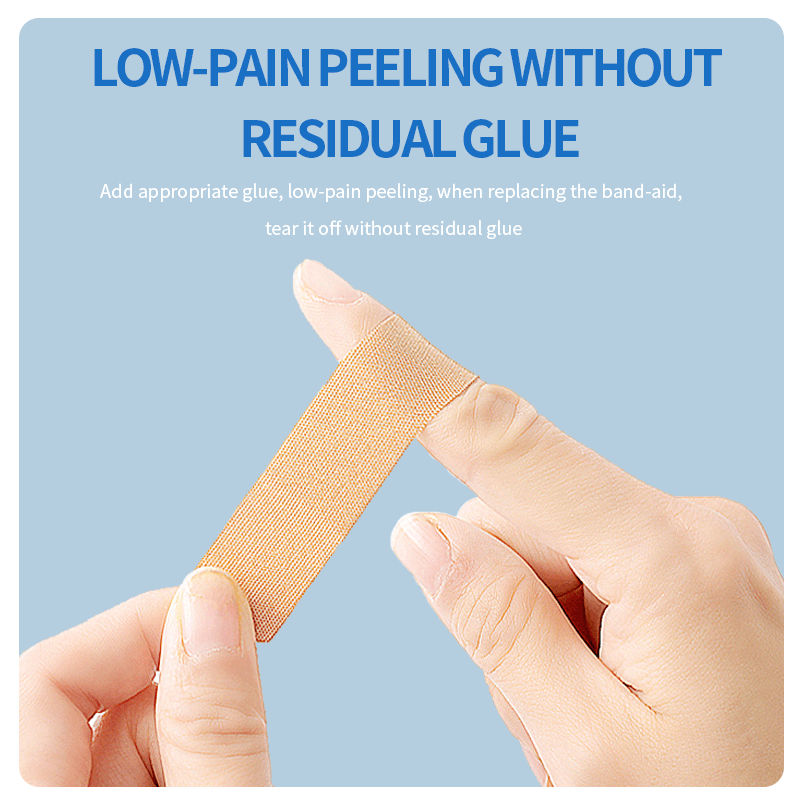
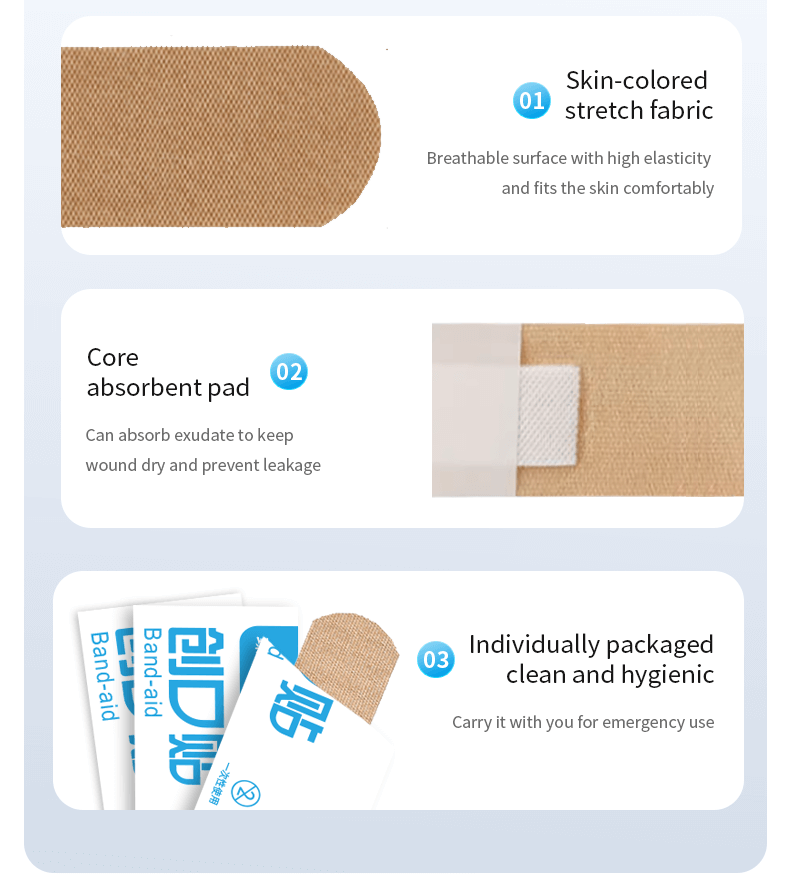
Absorbent Pad: The central part of the Band-Aid, which covers the wound, is made of an absorbent material that helps to soak up blood and exudate, keeping the wound clean and dry.
Adhesive Strip: The sticky part of the Band-Aid that holds it in place. It is designed to adhere securely to the skin without causing irritation or leaving a sticky residue when removed.
Easy-Peel Tabs: Some Band-Aids have easy-peel tabs to make application and removal simpler and more hygienic.
Cushioned Pads: For added comfort, especially over blisters or more sensitive areas, some Band-Aids feature cushioned pads.
Hypoallergenic Adhesive: For those with sensitive skin, hypoallergenic options are available to minimize the risk of allergic reactions.
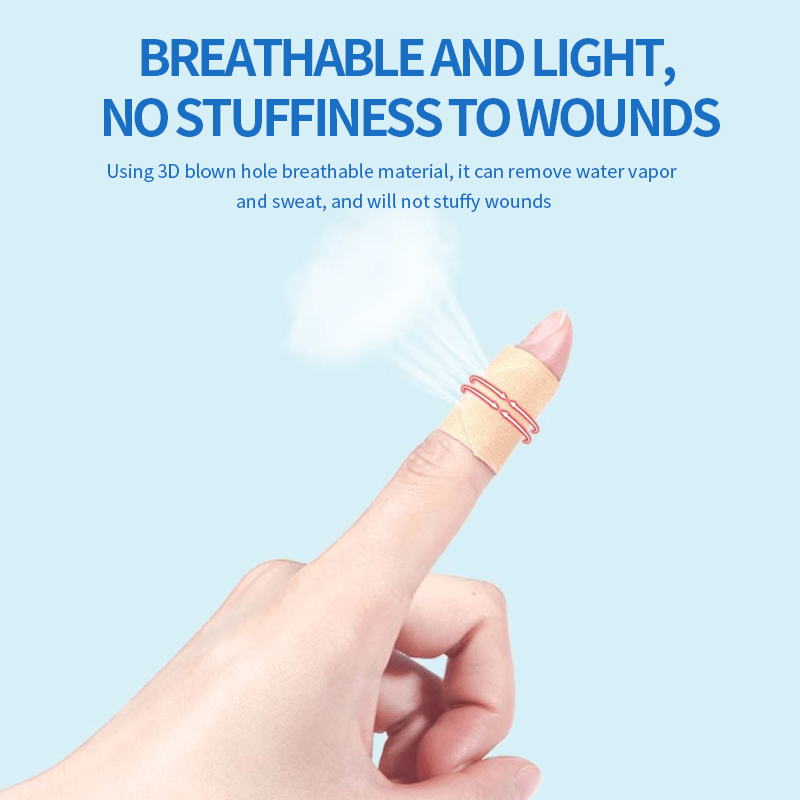
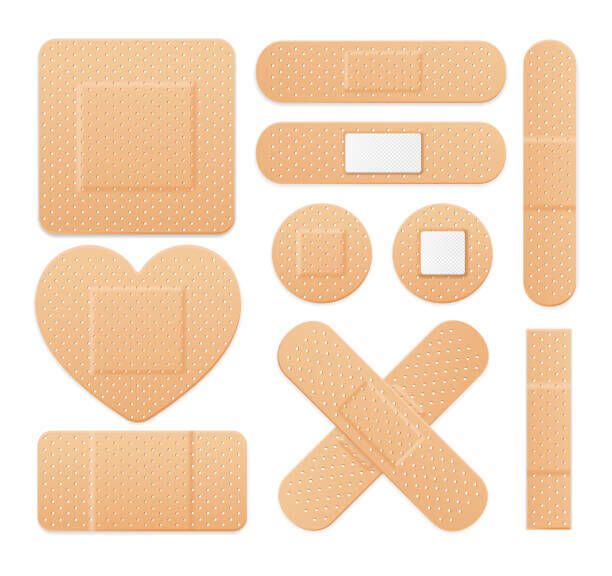
Breathable Design: Many Band-Aids are designed to be breathable, allowing air to circulate around the wound to promote faster healing.
Variety of Sizes and Shapes: Band-Aids come in various sizes and shapes to accommodate different types and locations of wounds, such as fingertip, knuckle, or large wound bandages.
Decorative Designs: Especially popular for children, some Band-Aids feature fun designs, colors, and characters to make the experience of wearing a bandage more enjoyable.
Waterproof Options: Some Band-Aids are made from waterproof materials, making them suitable for use during activities like swimming, showering, or washing hands.
Transparent Options: Clear Band-Aids are available for a more discreet look, blending in with the skin.
Antibacterial/Antibiotic Pad: Some Band-Aids come with an antibacterial or antibiotic-infused pad to help prevent infection and promote healing.
Product Name | Band Aid / Wound Adhesive Band Aid Strips / Waterproof and Breathable Adhesive Bandages / Assorted Sizes First Aid Band Aids |
Material | PE, PVC, PU, EVA, Bamboo Fiber, Elastic Fabric, Cotton, Non-woven, foam, etc. |
Size | 76*19,72*19, 70*19, 78*38, 55*19mm, ø22mm or customized |
Color | Skin color, transparent or customized |
Function | Skin Care |
Type | Cross type, Butterfly type, H-type, Round type, etc. |
Packing | Customized with customers' requirements |

Adhesive bandages, commonly known as band-aids, are composed of several materials, each serving a specific function to ensure the bandage is effective, comfortable, and safe for use. Here are the primary components and materials used in adhesive bandages:
Adhesive Layer:
Acrylic Adhesives: These are commonly used due to their strong bonding properties and hypoallergenic nature.
Rubber-Based Adhesives: These provide strong adhesion but may cause allergic reactions in some individuals.
Silicone Adhesives: These are gentle on the skin and are often used in bandages designed for sensitive skin.
Backing Material:
Plastic (Polyethylene or Polyurethane): These materials are flexible, waterproof, and provide a barrier against contaminants.
Fabric (Cotton or Rayon): Fabric bandages are breathable and conform well to the skin, making them comfortable for extended wear.
Foam: Foam backings are soft and cushiony, providing extra comfort and protection.
Absorbent Pad:
Cotton or Rayon: These materials are highly absorbent and help to wick away moisture from the wound.
Non-Woven Fabrics: These are used for their absorbent properties and to prevent the pad from sticking to the wound.
Release Liner:
Silicone-Coated Paper or Plastic: This layer covers the adhesive until the bandage is ready to be used, ensuring the adhesive remains effective.
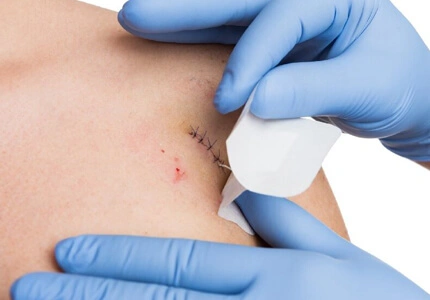
To protect small surgical incisions after minor procedures, as advised by a healthcare provider.
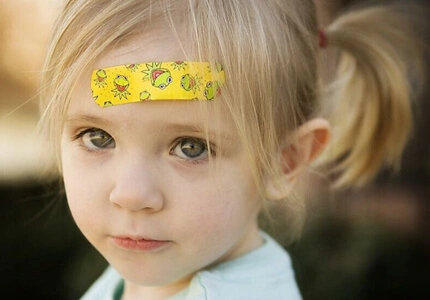
To protect the wound from dirt and bacteria, which can help prevent infection and promote healing.
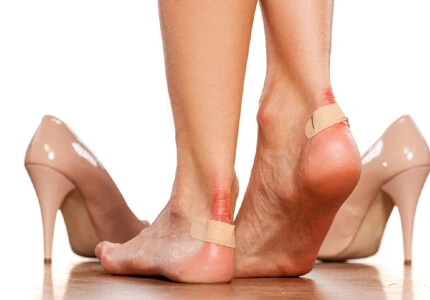
To cushion the blister and prevent further friction, which can help reduce pain and prevent the blister from worsening.
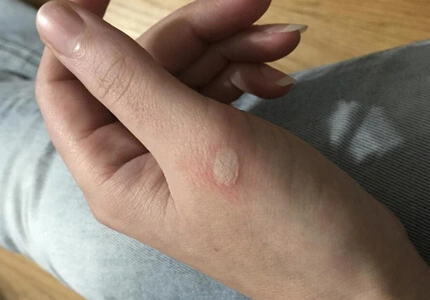
To cover minor burns and protect them from further irritation.
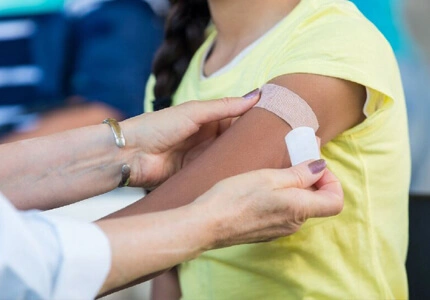
To cover the site of an injection or vaccination to keep it clean and protected.
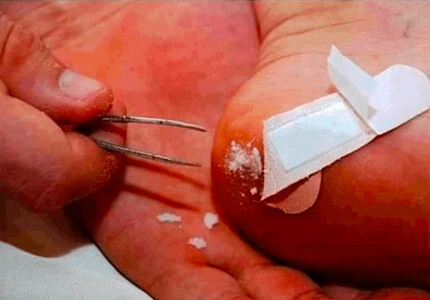
To cover the area after removing a splinter to keep it clean and prevent infection.
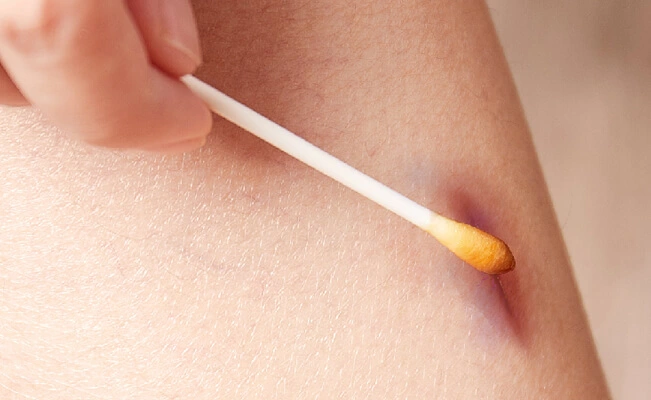
Gently clean the wound with mild soap and water or a saline solution. Remove any dirt or debris. Pat the area dry with a clean towel or sterile gauze.
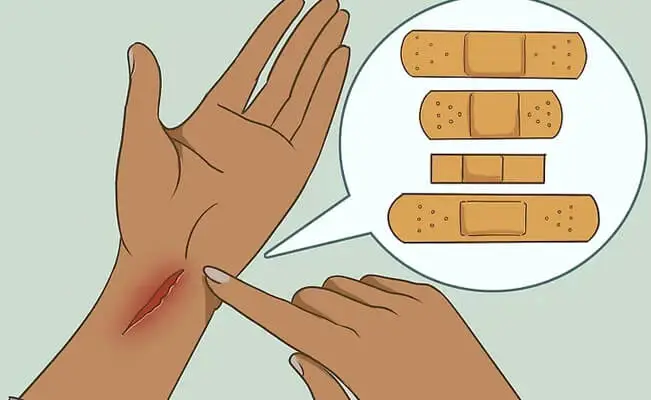
There are many different types of dressings and bandages that can be used for a wound. Some factors to consider when choosing a bandage include the size/shape of the wound, the nature of the wound, and any allergies the injured person might have.
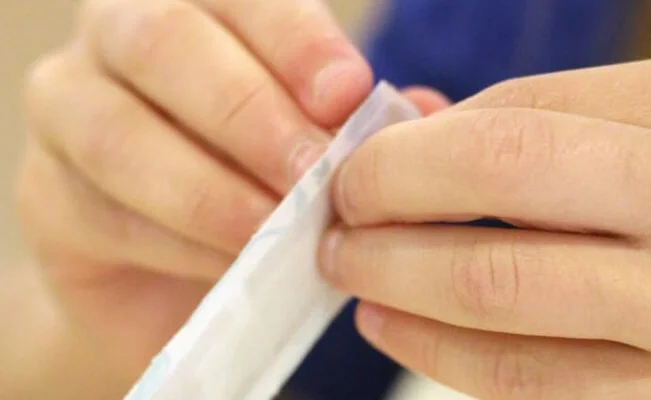
Tear open the Band-Aid package along the designated edge without touching the adhesive part to maintain sterility. Take out the Band-Aid, holding it by the protective tabs.
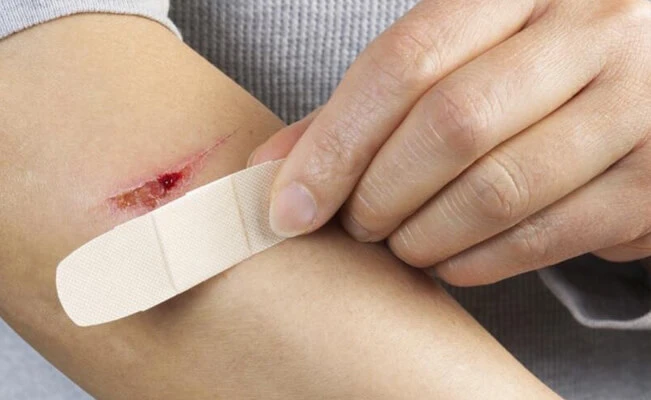
Remove the protective backing from the adhesive strips, being careful not to touch the pad. Place the absorbent pad directly over the wound. Ensure that the pad completely covers the wound to protect it from dirt and bacteria.
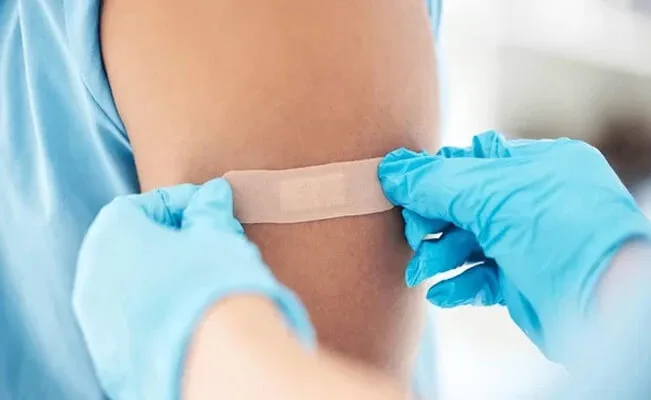
Press the adhesive strips down on either side of the pad, smoothing them out to ensure they stick well to the skin. Make sure there are no wrinkles or gaps where dirt or bacteria could enter.